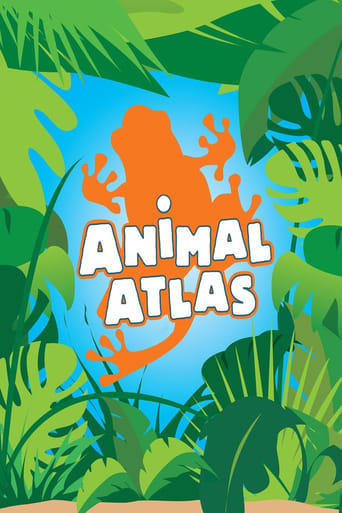Animal Atlas Season 6

Animal Atlas is produced by Longneedle Entertainment, LLC, a subsidiary of Bellum Entertainment Group. Animal Atlas is a 30-minute educational wildlife show that "takes children on a tour of discovery, uncovering the secrets of how animals live and thrive. Young viewers meet animals from the familiar to the astounding, and the domesticated to the wild, including the diverse creatures of the African savanna, the finned and flippered of the big deep, and the colorful cast of the equatorial rainforest". Atlas began in 2004 for its first season in national syndication and will be going on its tenth year of national syndication during the 2013-2014 season. As of January 2013, Bellum will have produced over 230 high definition episodes of Animal Atlas and fourteen home entertainment DVD titles about animals.
Watch NowWith 30 Day Free Trial!
Animal Atlas
2004
Animal Atlas is produced by Longneedle Entertainment, LLC, a subsidiary of Bellum Entertainment Group. Animal Atlas is a 30-minute educational wildlife show that "takes children on a tour of discovery, uncovering the secrets of how animals live and thrive. Young viewers meet animals from the familiar to the astounding, and the domesticated to the wild, including the diverse creatures of the African savanna, the finned and flippered of the big deep, and the colorful cast of the equatorial rainforest". Atlas began in 2004 for its first season in national syndication and will be going on its tenth year of national syndication during the 2013-2014 season. As of January 2013, Bellum will have produced over 230 high definition episodes of Animal Atlas and fourteen home entertainment DVD titles about animals.
Watch Trailer
With 30 Day Free Trial!
Animal Atlas Season 6 Full Episode Guide
A look at what’s great and fascinating about the nearly 5,000 species of lizards alive today, from chameleons to iguanas to basilisks. First, an examination of what makes a lizard a reptile, and what these incredible creatures have in common with other reptiles, especially snakes. Next, a look at what is common to all lizards, such as being cold-blooded and scaly-skinned. Finally, a rundown of some amazing facts about specific lizards, such as the ability to lose a tail and grow a new one, and to have 180 degrees of vision.
An exploration into the watery life of amphibians, including colorful frogs, toads, newts, salamanders. An examination of what amphibians have in common with other cold-blooded creatures such as fish and reptiles, and what sets them apart. Finally, a trip from an amphibian’s larval stage through its adult stage, and a look at the important role water plays in the amphibian lifecycle.
A wild ride through animal classification! What determines an animal’s species? Why do the same kinds of animals sometimes look different from each other? What makes a subspecies? All in all, who is related to who, and why.
A panoramic look at animals that live in trees. We ask how they get up there in the first place (climb, fly, leap), what adaptations they have to live as tree-dwellers (claws to prehensile tails), and which animals we can expect to find in trees (birds, monkeys), including those we don’t (kangaroos).
An exploration into the world of wild animals that live in our human neighborhoods. What makes a habitat livable? We look at how the temperature, plant life, and climate determine where an animal lives.
A closer look at bones, from animals with a backbone (vertebrates), to those with skeletons made of cartilage (sharks), to those animals who don’t need bones at all (invertebrates). We ask what constitutes an exoskeleton, a hydrostatic skeleton, and a turtle’s carapace.
A wild ride into animal nomenclature.
A look at the animals living today who were around at the time of the dinosaurs, and even before. We look at how some animals have changed a great deal while others have hardly changed at all, and why these animals survived when the dinosaurs didn’t.
We delve into the secrets of snakes and lizards, alligators and crocodiles, and turtles and tortoises.
An exploration into the world of animals that are not only nocturnal and diurnal, but crepuscular. We look at why animals are awake at one time instead of another, and what special sensory adaptations they have for nocturnal living.
All that’s fascinating about birds: from feathers, to flight, to beaks and bills. The biggest, the flightless, the raptors, the nut-crackers. The parrots, the owls, and the ostrich.
A fascinating exploration into the world of the four great apes: the gorilla, the orangutan, the chimpanzee, and the bonobo.
A closer look at monkeys: the old world and the new world; the biggest and the smallest; the baboons, the guenons, the tamarins.
An exploration into the world of the primates: from apes, to monkeys, to prosimians. How they differ, how to tell them apart, what they have in common.
Free Trial Channels
Seasons


























